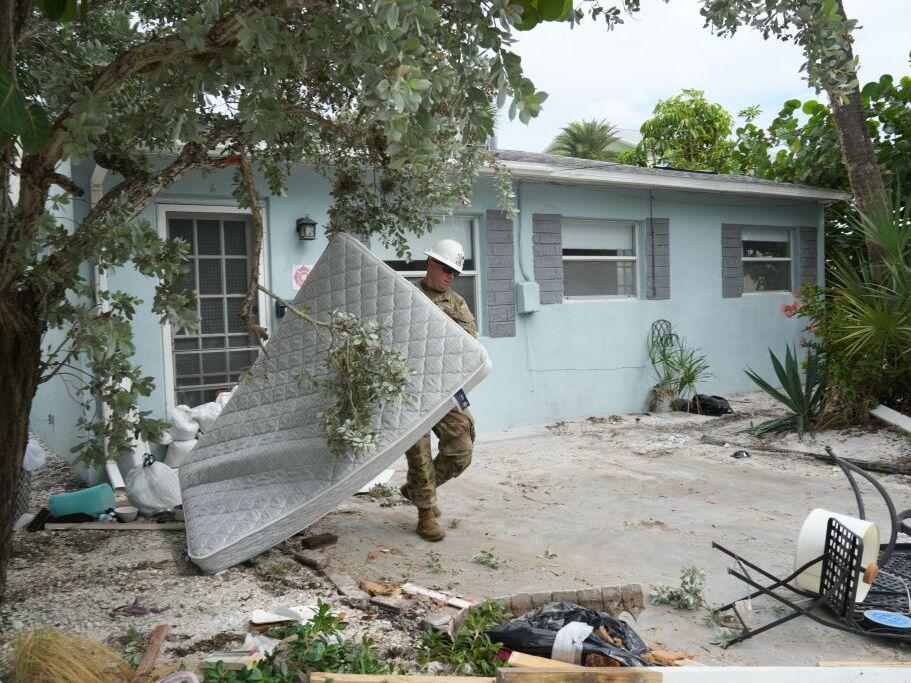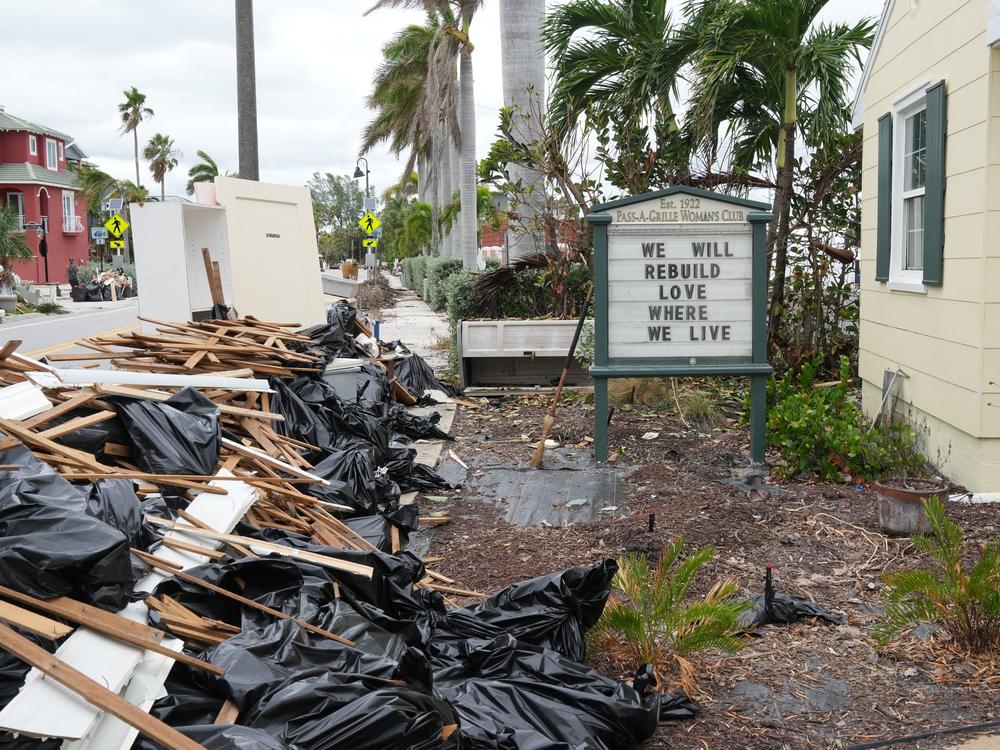Section Branding
Header Content
Why Tampa Bay is at such high risk for hurricane damage
Primary Content
Mandatory evacuations along Florida's west coast are underway as Hurricane Milton churns toward the state and could make landfall as one of the most devastating hurricanes to hit the area in over a century.
"Milton has the potential to be one of the most destructive hurricanes on record for west-central Florida,” the National Hurricane Center said on Wednesday.
The Tampa Bay area, which could take a direct hit from Milton, has been forecast to experience storm surge of up to 15 feet — less than two weeks after Hurricane Helene flooded the area. The last time the eye of a major hurricane hit Tampa directly was in 1921.
Here is why experts warn that the area — with more than 700 miles of shoreline and 3 million residents — is at particular risk of hurricane damage.
Its location and topography
Tampa Bay is surrounded by the metropolitan areas of Tampa, as well as Clearwater and St. Petersburg — in the state's most densely populated county, Pinellas. Barrier islands line its Gulf coast.
Much of the region is at low elevation and naturally prone to flooding. That's exacerbated by rising sea levels. Since 1946, water levels in Tampa Bay have increased 7.8 inches and the region could experience sea levels rise another 2 to 8.5 feet by 2100, according to a 2019 analysis by the Tampa Bay Climate Science Advisory Panel.
Low-lying land — coupled with the shallow waters and wide, sloping continental shelf off the west coast — could lead to dangerous flooding from storm surges, hurricane researchers in Florida tell NPR.
"The wide continental shelf with shallow water allows storms like Helene and Milton to create very large storm surges," Thomas Wahl, an associate professor of civil engineering at the University of Central Florida who studies flood-prone areas, tells NPR.
Excessive rainfall and elevated river discharge can combine with storm surge to create what's known as compound flooding, Wahl says.
The crescent-like shape of Tampa Bay, which is 400 square miles, and the intensity and track of the hurricane also affect how intense the surge will be, according to Maitane Olabarrieta, a professor of coastal oceanography at the University of Florida and associate director of the university’s Center for Coastal Solutions.
The wind pushes the water against the land lining a bay, she explains. "The land acts as a barrier to the water flow, and consequently the water accumulates in the coast.”
Olabarrieta also says the infrastructure is not designed to dispel storm surges, flash flooding, compound flooding and waves.
"Roads and buildings can funnel the flow, creating areas of water flow convergence," she says. The roads provide little resistance to the flow, and storm surge may be able to come inland more easily.
These factors, coupled with rapid development, especially along the coast, and the region's growing population, raise the magnitude of potential risk.
The region has not recovered from Hurricane Helene
Though it did not take a direct impact from Helene, the Tampa Bay area experienced record storm surge.
Flooding and winds damaged thousands of homes, according to member station WUSF. At least 12 people near Tampa in Pinellas County died because of Helene.
Lingering debris and damage caused by Helene is also a major concern ahead of Milton’s landfall.
More than 1,200 truckloads of debris have been removed from barrier islands in Pinellas County, and efforts to remove debris in the Tampa Bay region will continue until it’s no longer safe, Gov. Ron DeSantis said Tuesday.
With Milton approaching so soon afterward, the already struggling region is facing even more stress, says Olabarrieta.
“When we have one storm hitting after the other one, coastal communities might not have enough time to recover and become more vulnerable," she says.
As well, Olabarrieta says, beaches and dunes along the Florida coast that protect coastal communities are eroding — and recurring extreme storms like Helene and Milton are only increasing this damage.
“If the dunes are high enough, they might prevent the flooding from storm surge,” she says. “If they are not high enough to prevent the flooding, these systems can dissipate at least the waves, and protect the ecosystems and infrastructure behind them.”
Olabarrieta says it takes time — usually years — for these systems to recover.
Local resources
Member stations across the NPR Network in Florida are covering the local impact of Hurricane Milton.
➡️ Tampa Bay [via WUSF] | Text-only site | Radio: 89.7 FM
➡️ Tampa [via WMNF] | Radio: 88.5 FM
➡️ Orlando [via Central Florida Public Media] | Text-only site | Radio: 90.7 & 89.5 FM
➡️ Fort Myers via [WGCU] | Radio: 90.1 & 91.7 FM
➡️ Miami [via WLRN] | Radio: 91.3 FM
➡️ Gainesville [via WUFT] | Text-only site | Radio: 89.1 & 90.1 FM
➡️ Jacksonville [via WJCT] | Radio: 89.9 FM


